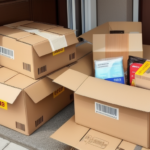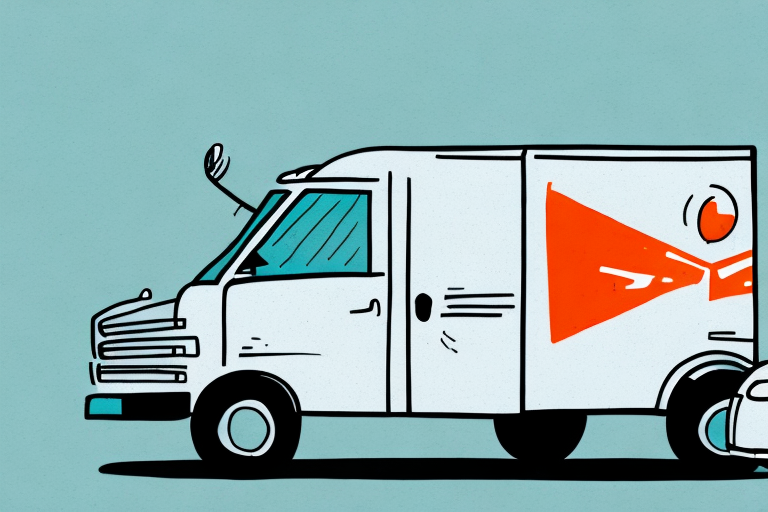Streamlining Your Order Filling Process for Maximum Efficiency
In today's fast-paced business environment, time is money. That's why it's crucial to have an efficient order filling process in place. Whether you're dealing with a high volume of small orders or a smaller number of larger ones, the goal is always the same: to get the products out the door as quickly and accurately as possible. In this article, we'll examine the key elements of a streamlined order filling process and how you can achieve maximum efficiency in your own business.
Understanding the Importance of Efficient Order Filling
The order filling process is the backbone of any business that deals with physical products. It's the link between your warehouse and your customers, and it can be the difference between a satisfied customer and a frustrated one. In essence, it's the final touchpoint between your business and your customers, and it's the last chance to make a positive impression on them. An efficient order filling process can mean the difference between a customer who comes back to you for future orders or one who takes their business elsewhere.
One of the key benefits of efficient order filling is that it can help to reduce costs for your business. When orders are filled quickly and accurately, there is less chance of errors or mistakes that can lead to returns or refunds. According to a Statista report, businesses lose billions annually due to order fulfillment errors. Reducing these errors can save your business money on shipping costs, restocking fees, and other expenses associated with returns and exchanges.
Another important aspect of efficient order filling is that it can help to improve your overall customer satisfaction. When customers receive their orders quickly and accurately, they are more likely to be satisfied with their experience and to recommend your business to others. This can lead to increased sales and revenue for your business over time.
Evaluating and Optimizing Your Current Order Filling System
Assessing Current Procedures
The first step in streamlining your order filling process is to evaluate your current system. Take a close look at your existing procedures and identify any bottlenecks or areas where the process could be improved. For example, are you using a manual system that relies heavily on paper forms and manual data entry? If so, this is a potential bottleneck that could be slowing down your order filling process.
Identifying Human Error
Look also to identify any areas of human error or inconsistency—for instance, is there a tendency for certain employees to make mistakes in their order picking or packing? Identifying these shortcomings is the first step to creating a more efficient system.
Assessing Technological Tools
Another important factor to consider when evaluating your current order filling system is the technology you are using. Are you using outdated software or hardware that is slowing down the process? Upgrading to newer technology can often lead to significant improvements in efficiency and accuracy.
Implementing Effective Strategies to Speed Up Your Order Filling Process
Automation and Technology Adoption
There are several tips and best practices you can follow to speed up your order filling process. Firstly, consider automating as much of the process as possible. This might involve investing in barcode scanners or RFID readers to help with inventory management and order tracking.
Batch Picking Techniques
Another effective strategy is to make use of batch picking, where multiple orders are picked at the same time, cutting down on the time required to move between shelving units. According to a study by Supply Chain Digital, batch picking can increase picking efficiency by up to 30%.
Standardizing Packing Procedures
Additionally, order packing can be streamlined by using standardized packing materials and optimizing the packing layout to minimize handling time and reduce the risk of errors.
Prioritizing Orders
Implement a system for prioritizing orders. By identifying which orders are most urgent or have the shortest lead times, you can ensure that they are processed and shipped out first, reducing the risk of delays and customer dissatisfaction.
Continuous Process Review
Regularly review and analyze your order filling process to identify any bottlenecks or areas for improvement. This might involve conducting time studies, gathering feedback from employees, or using data analytics tools to identify patterns and trends.
Leveraging Technology for Enhanced Order Accuracy and Speed
Advanced Picking Technologies
New technology is constantly being developed and refined to improve the efficiency and accuracy of order filling processes. One example is the use of voice picking technology, which allows employees to receive picking instructions via a headset, greatly improving accuracy and speed.
Robotics and Automation
Another advancement is the use of robots and automated systems to handle order picking and packing tasks. Although these technologies require an upfront investment, they can ultimately save time and money in the long run.
Barcode Scanning and Inventory Management
Barcode scanning technology can be used to quickly and accurately identify products and ensure that the correct items are being picked and packed. This technology can also be used to track inventory levels and alert employees when it's time to restock.
Data Analytics for Process Optimization
Utilize data analytics to analyze order data, identify patterns, and optimize fulfillment processes. For example, discovering that certain products are frequently ordered together can allow them to be picked and packed simultaneously, saving time and enhancing efficiency.
Training and Developing Your Staff for Optimal Performance
Comprehensive Training Programs
Your order filling process is only as efficient as your employees allow it to be. Invest in comprehensive training programs to ensure that your employees understand best practices for order picking, packing, and shipping.
Ongoing Education and Skill Development
Provide ongoing education to keep your team up-to-date on the latest technologies and techniques. This might involve training on new software systems, automated tools, or advanced packing methods.
Employee Incentives and Motivation
Offering incentives for employees who consistently meet or exceed order filling performance goals can effectively motivate and encourage staff to work efficiently. This can include bonuses, recognition programs, or other rewards that align with your company's values and culture.
Building a Versatile Workforce
Consider offering cross-training opportunities to build a more versatile workforce. This allows employees to perform multiple roles, increasing flexibility and reducing downtime in the order filling process.
Measuring, Tracking, and Continuously Improving Your Order Filling Metrics
Key Performance Indicators (KPIs)
If you're not measuring your order filling metrics, you'll never know if you're improving. Track important KPIs like average order cycle time, order accuracy, and inventory turnover to identify trends and measure the success of your improvement initiatives over time.
On-Time Shipping Rates
One important metric is the percentage of orders shipped on time. This helps identify bottlenecks in your fulfillment process and ensures that customers receive their orders promptly.
Error Rates and Rework
Tracking the percentage of orders that require rework can highlight areas needing improvement in your order filling process, reducing errors and enhancing efficiency.
Cost Analysis
Monitor the cost of order fulfillment, including labor, materials, and shipping. Identifying areas where costs can be reduced without compromising quality is essential for maintaining profitability.
Continuous Monitoring
Set clear metrics to track and hold your team accountable for efficiency, continuously raising the bar for order filling performance.
Continuous Improvement Strategies for Long-Term Efficiency Gains
Regular Process Reviews
Efficiency gains don't happen overnight. Continually monitor and improve your order filling process by regularly reviewing procedures, setting clear improvement goals, and implementing targeted strategies to achieve those goals.
Consulting Experts
Consider enlisting the help of an order filling process consultant who can offer an objective view of your processes and suggest strategies for improvement. External expertise can provide new insights and identify inefficiencies that may not be apparent internally.
Employee Feedback and Involvement
Involve your employees in the continuous improvement process by encouraging feedback and suggestions. Employees on the front lines often have valuable perspectives on how to enhance efficiency and reduce errors.
Adopting Best Practices
Stay informed about industry best practices and emerging trends. Incorporating these practices into your order filling process can help maintain a competitive edge and drive long-term success.
In conclusion, streamlining your order filling process for maximum efficiency is a worthwhile investment for any business that handles physical products. By following best practices, using technology to your advantage, and continuously monitoring and improving your processes, you can cut lead times, increase accuracy, and improve customer satisfaction, ultimately driving better business results.
One effective strategy for improving order filling efficiency is to implement a barcode scanning system. This technology can greatly reduce errors and speed up the process by automatically inputting product information into your system. Additionally, using automated conveyor systems and robotics can further streamline the process and reduce the need for manual labor.
Another important aspect of continuous improvement is employee training. Regularly providing training and education on best practices and new technologies can help ensure that your team is equipped with the knowledge and skills needed to perform their jobs efficiently and effectively. This can also help boost employee morale and job satisfaction, leading to a more productive and engaged workforce.




















